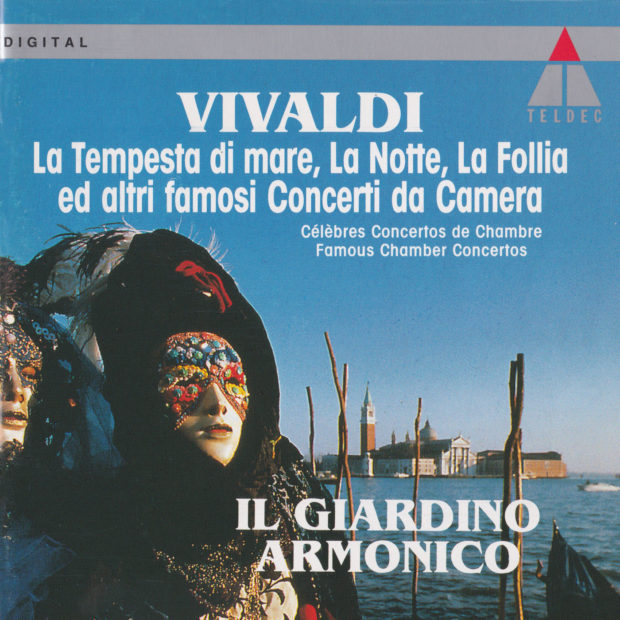On 28th July 1741 Antonio Vivaldi was buried in the paupers’ graveyard near Vienna. In order to keep the costs as low as possible only a small bell was rung at the burial. An official notice reads: ‘The Abbé Don Antonio Vivaldi, known as the ‘prete rosso’, an outstanding violinist and famous composer of instrumental concertos, who is said at one time to have earned 50000 Ducats, has died in Vienna in direst poverty owing to his extravagance.’ One thing is certain: Vivaldi was considerably more generous with his musical talent, ability and skill than with money. The ‘red priest’ composed no less than 500 concertos; these instrumental works assured the Venetian composer a European reputation in his own lifetime. But Vivaldi’s fame did not outlast him. The Venetian and his works were soon forgotten.
The rediscovery of Vivaldi’s concerti is one of the most exciting chapters in musical history. After the turmoil of the Napoleonic wars it was assumed that most of his works had been lost. Only sophisticated detective work — allied with luck — brought to light in a Salesian monastery in Piedmont in the autumn of 1926 fourteen volumes of hitherto unknown works by Vivaldi. But evidently the monastery only possessed part of what had previously been a much larger collection. In October 1930 a further clue pointed to Genoa, to a descendant of Count Durazzo (1717 – 1794), one of those who had at one time owned Vivaldi’s estate. And here-were found the missing note books. This sensational discovery, which included several hundred concerti, also marked the beginning of a great Vivaldi renaissance.
But how are these discoveries to be properly performed? How should Vivaldi’s concerti sound? What are the appropriate tempi and dynamics? Since early music has been performed on original instruments, it has become quite obvious that the 19th century romantic tradition of interpretation is unsatisfactory. In Germany, England and the Benelux countries people have for many years been concerned with historical performance practice. It has been different in Italy. The first Italian ensemble to specialize in the performance of baroque music, IL GIARDINO ARMONICO of Milan, was only founded in 1985. The highly imaginative name of the ensemble recalls the many famous titles of 17th century works such as Armonico Tributo (1682) by Georg Muffat, Giardinelto d’Amore (1623) by Johann Hermann Schein and even Der musikalische Lustgarten (the Musical Pleasure Garden, 1601) by Hans Leo HaBler. The playing of the ensemble is just as unconventional as their name is imaginative — particularly their performance of Vivaldi.
IL GIARDINO ARMONICO lays stress on the ‘entirely new style’ which was ascribed in the 18th century to Vivaldi’s concerti. At that time there prevailed among music lovers a particular preference for the bizarre and deliberately peculiar. Vivaldi’s musical “Extravagances” — when compared to what was customary at the time — consist predominantly of far-fetched modulations and a preference for .subtle and unconventional turns. With sensitively graduated dynamics, striking instrumental articulation, contrasting emotions and rubato, IL GIARDINO ARMONICO pursue precisely this exciting aspect of the concerti. °Vivaldissimo” wrote one critic in 1991, the Vivaldi Year. He was probably not the only one for whom IL GIARDINO ARMONICO’s performance was a musical (re)discovery of Vivaldi.
Wolfgang Sandberger

